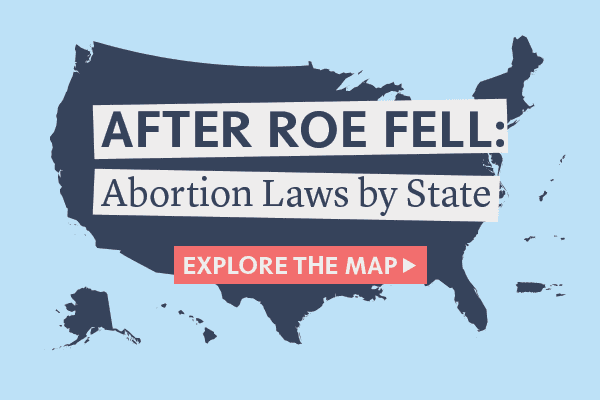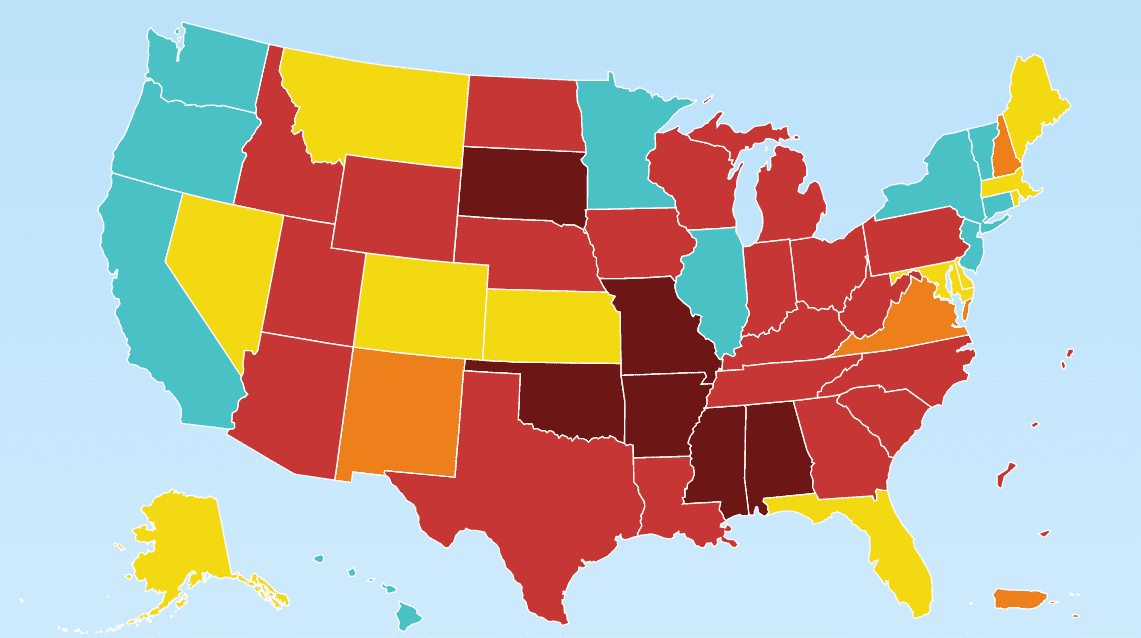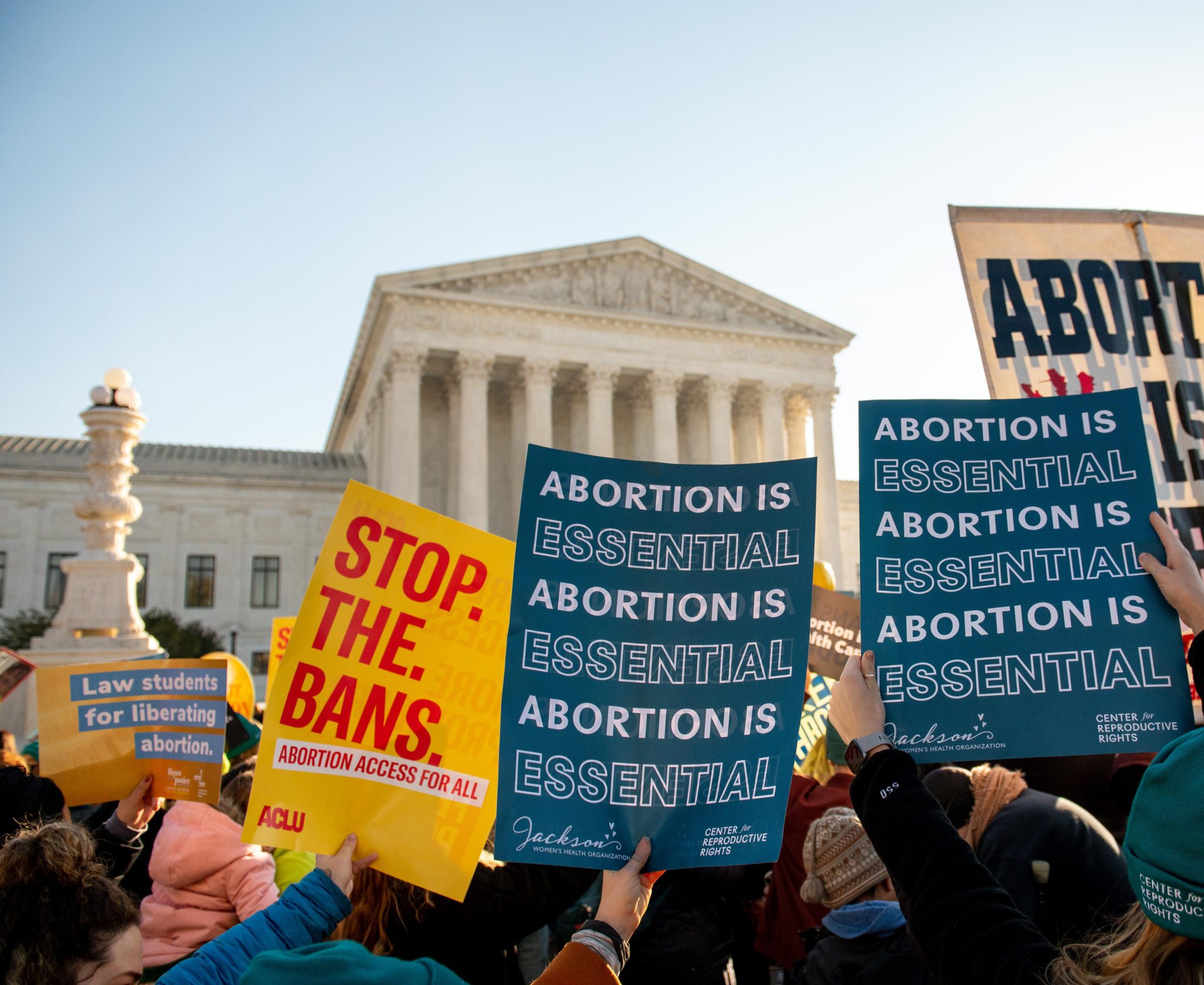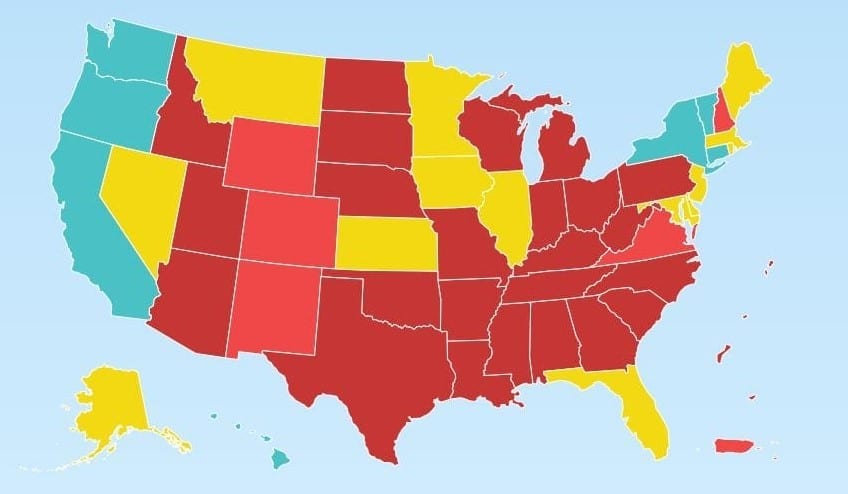After Roe Fell: Abortion Laws by State
Find out where abortion is illegal in the U.S. now that Roe v. Wade is overturned.

Hostile state legislatures across the country are rushing to make abortion illegal or inaccessible following the U.S. Supreme Court’s decision overturning Roe v. Wade and taking away the constitutional right to abortion. For people seeking abortion care, this rush is causing widespread confusion and fear as the status of legal abortion changes hour-by-hour in states across the country.
To help lawmakers, policy advocates, and all abortion rights supporters understand the legal status of abortion in this rapidly changing environment, the Center for Reproductive Rights is tracking and reporting on the legal status of abortion in all 50 states, the District of Columbia, and the five most populous U.S. territories.
The Center’s interactive map, After Roe Fell: Abortion Laws by State, previously known as What if Roe Fell?, provides real-time analysis of where abortion is illegal in the U.S.—as well as which states have other types of bans, restrictions, and legal protections for abortion. The map is updated as changes occur.
Three Ways to Use the “After Roe Fell” Interactive Map and Tool
After Roe Fell provides multiple layers of information to help illuminate the status of abortion law in the U.S.
1. Explore the National Landscape: Based on laws, constitutions, and court decisions on abortion, each state is designated to one of five categories: Expanded Access, Protected, Not Protected, Hostile, and Illegal. Click on one or more state categories to identify regional and national trends on abortion law in the U.S.
2. Filter the Map by Abortion Laws: Want to know which states have trigger bans designed to ban abortion if Roe fell? Click through the map’s filters to find out which states have specific types of bans, restrictions, and protections.
3. Read In-Depth Information on Each State: Select an individual state to read an in-depth and updated report with citations on its current laws, constitutional provisions, and court decisions impacting access.
According to this analysis, half of U.S. states will likely take action to prohibit abortion in the wake of the Supreme Court’s decision overturning Roe v. Wade.
From “What if Roe Fell?” to “After Roe Fell”
The Center started publishing What if Roe Fell? in 2004 to provide lawmakers, advocates, and analysts an overview of what could happen to abortion rights if the Supreme Court were to limit or overturn Roe v. Wade, the landmark Supreme Court ruling from 1973 that recognized abortion as a constitutional right.
Following the Supreme Court’s decision in Dobbs v. Jackson Women’s Health Organization, the map has been renamed to acknowledge the devastating impact of the Supreme Court’s ruling, which marked the first time in history that the Court revoked a personal liberty right.
Top 7 Things You Can Do Right Now for U.S. Abortion Rights
What you can do to help people seeking abortion care and to protect abortion rights:
How U.S. Abortion Law Compares to Other Countries
Over the last 25 years, there has been an overwhelming global trend toward liberalization of abortion laws in countries around the world, with nearly 60 countries expanding abortion rights and only four—including the United States—imposing restrictions since 1994. The Supreme Court’s decision in Dobbs and subsequent state-level bans have made the U.S. an outlier to this global trend.
The Center’s World Abortion Laws Map analyzes abortion laws and policies in countries across the globe. The map categorizes the legal status of abortion on a scale from severe restrictiveness to relative liberality. World Abortion Laws is updated in real-time, reflecting changes in national laws and the exercise of reproductive rights around the world.
With the Supreme Court’s ruling in Dobbs, on the World Abortion Laws Map the U.S. has moved from the “On Request” category, designated by solid blue, to a combination of red (“Prohibited Altogether”) and blue, to reflect the new reality that the legality of abortion in the U.S. varies from state to state.



